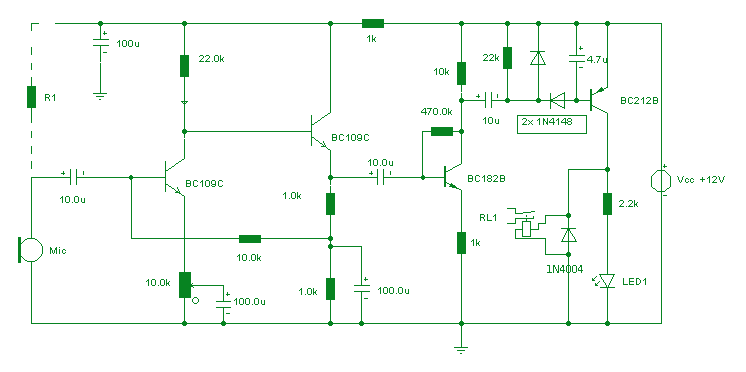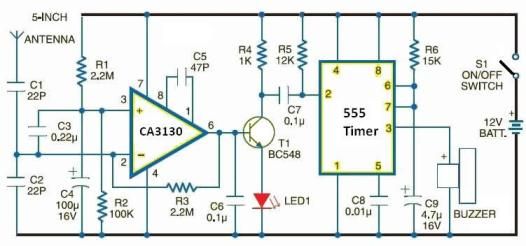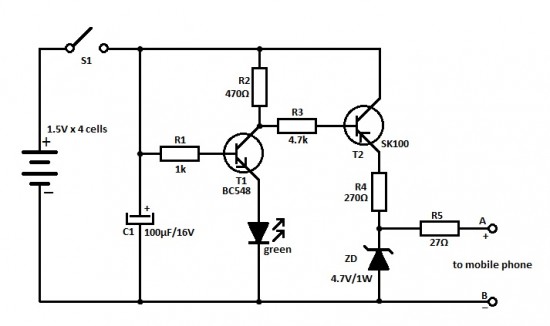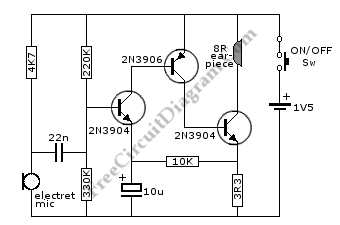
Cell Phone Operated Land Rover
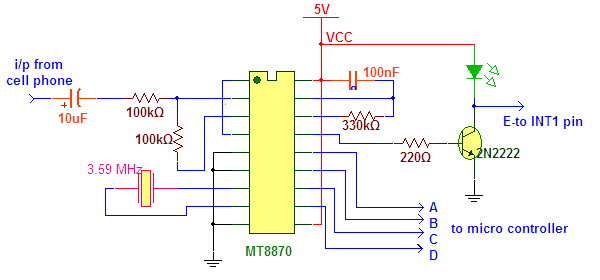
The primary functions of this drive include providing a smooth start for the motor, changing its direction, and adjusting its speed. This application demonstrates a DC drive that controls the speed and direction of a DC motor using a standard TV remote control. All standard TV remote controls operate using the RC5 protocol developed by Philips. In this setup, an RC5 decoder chip, the ST3049, is utilized to decode the signals from the RC5 remote control and output 6-bit digital data. The control of the DC motor is managed by the 89C51 microcontroller in conjunction with a dual H-Bridge chip, the L293D. The RC5 protocol is widely recognized as a universal standard for infrared remote controls, having been developed by Philips, and is now used in nearly all remote control devices. Additionally, care is taken to ensure that the IR codes are unique to various electronic devices and manufacturers.
The circuit design consists of several key components that work together to achieve the desired control of the DC motor. The ST3049 RC5 decoder chip is connected to the infrared receiver module, which captures signals from the remote control. When a button is pressed on the remote, the corresponding RC5 code is transmitted, and the ST3049 decodes this signal into a 6-bit digital output. This output is then fed into the microcontroller (89C51), which interprets the data and executes the appropriate commands for motor control.
The 89C51 microcontroller is programmed to recognize specific commands associated with the remote control buttons. For instance, pressing a button to increase speed will send a command that adjusts the PWM (Pulse Width Modulation) signal sent to the L293D H-Bridge. The L293D is responsible for driving the DC motor by controlling the direction of the current flow through the motor windings. By changing the polarity of the inputs to the H-Bridge, the microcontroller can reverse the motor's direction as required.
The circuit also includes power supply components to ensure that both the microcontroller and the motor receive adequate voltage and current levels. Bypass capacitors may be employed to stabilize the power supply and prevent voltage spikes from affecting the operation of the microcontroller and decoder. Additionally, the design may incorporate protective diodes to safeguard the components from back EMF generated by the motor during operation.
Overall, this system effectively demonstrates the integration of infrared remote control technology with motor control applications, showcasing the versatility and practicality of the RC5 protocol in modern electronic designs.The basic functions of this drive are to give smooth start to motor change the direction, change the speed etc. Here I am demonstrating one such application of DC drive that will control speed and direction of a DC motor using standard TV remote control.
All the standard TV remote controls works on RC5 protocol developed by Philips. So here I am using one RC5 decoder chip ST3049 that will decode the codes of RC5 remote control and directly gives 6bit digital data. Controlling of DC motor is handled by micro controller 89C51 with help of dual H-Bridge chip L293D. RC5 is most popular protocol used for IR remote control. It was developed by Philips. Now it hasbecome universal protocol and used in almost each and every remote control. Also care is taken that IRcode is unique for electronics equipments and manufacturers. 🔗 External reference
The circuit design consists of several key components that work together to achieve the desired control of the DC motor. The ST3049 RC5 decoder chip is connected to the infrared receiver module, which captures signals from the remote control. When a button is pressed on the remote, the corresponding RC5 code is transmitted, and the ST3049 decodes this signal into a 6-bit digital output. This output is then fed into the microcontroller (89C51), which interprets the data and executes the appropriate commands for motor control.
The 89C51 microcontroller is programmed to recognize specific commands associated with the remote control buttons. For instance, pressing a button to increase speed will send a command that adjusts the PWM (Pulse Width Modulation) signal sent to the L293D H-Bridge. The L293D is responsible for driving the DC motor by controlling the direction of the current flow through the motor windings. By changing the polarity of the inputs to the H-Bridge, the microcontroller can reverse the motor's direction as required.
The circuit also includes power supply components to ensure that both the microcontroller and the motor receive adequate voltage and current levels. Bypass capacitors may be employed to stabilize the power supply and prevent voltage spikes from affecting the operation of the microcontroller and decoder. Additionally, the design may incorporate protective diodes to safeguard the components from back EMF generated by the motor during operation.
Overall, this system effectively demonstrates the integration of infrared remote control technology with motor control applications, showcasing the versatility and practicality of the RC5 protocol in modern electronic designs.The basic functions of this drive are to give smooth start to motor change the direction, change the speed etc. Here I am demonstrating one such application of DC drive that will control speed and direction of a DC motor using standard TV remote control.
All the standard TV remote controls works on RC5 protocol developed by Philips. So here I am using one RC5 decoder chip ST3049 that will decode the codes of RC5 remote control and directly gives 6bit digital data. Controlling of DC motor is handled by micro controller 89C51 with help of dual H-Bridge chip L293D. RC5 is most popular protocol used for IR remote control. It was developed by Philips. Now it hasbecome universal protocol and used in almost each and every remote control. Also care is taken that IRcode is unique for electronics equipments and manufacturers. 🔗 External reference

